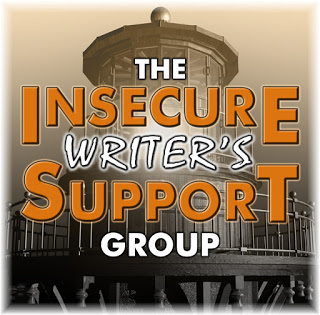Join us in April as Writer’s Zen celebrates the world of historical fiction, blogging along with the A to Z Blog Challenge. We’ll be posting our way through the alphabet, a letter at a time – every day except Sunday.
If you like historical fiction, there are links at the end where you can follow Pages of the Past on Facebook or sign up for the weekly newsletter. Each week we feature an article about writing historical fiction, spotlight a historical fiction author, and share great reads in a variety of time periods. There are also occasional short story contests and other fun highlights.
Today, introduces the letter L.
Get Pages of the Past delivered to your inbox every Friday!
Join us on Facebook: https://www.facebook.com/groups/184527085517941/

Librarians on Horseback
Most people think of librarians as sedately settled behind their counters assisting patrons, in the stacks shelving books, or in the back office ordering new selections. While we picture them busy working away amidst the silent reams of paper surrounding them, we don’t often think of them outside of the four enclosing walls they work in.
This isn’t always the case. While bookmobiles have been part of a library’s history over the years, with a few still operating, from 1935-1943 the WPA funded a project for the residents of rural Kentucky, where many librarians delivered their printed products on horseback.
Wikipedia reports:
The first Pack Horse Library was created in Paintsville in 1913 and started by May F. Stafford. It was supported by a local coal baron, John C.C. Mayo, but when Mayo died in 1914, the program ended because of lack of funding. Elizabeth Fullerton, who worked with the women’s and professional projects at the WPA, decided to reuse Stafford’s idea. In 1934, A Presbyterian minister who ran a community center in Leslie County offered his library to the WPA if they would fund people to carry the books to people who could not easily access library materials. That started the first pack horse library, which was administered by the Federal Emergency Relief Administration (FERA) until the WPA took it over in 1935. By 1936, there were eight pack horse libraries in operation.
Trails could be difficult and dangerous, except where the WPA had completed its farm-to-market road program.
The Pack Horse Library Project was headed by Ellen Woodward at a federal level. The project ran between 1935 and 1943. “Book women” were hired by the WPA and worked for around $28 a month delivering books in the Appalachians via horseback or on mules. They delivered both to individual homes and to schoolhouses. The WPA paid for the salaries of the supervisors and book carriers; all books were donated to the program.
There were around 30 different pack horse libraries who served around 100,000 different people in the mountain areas. The libraries also served around 155 schools in these counties by 1937.
I thought the whole subject of packhorse librarians was fascinating. I saw one historical fiction book on the subject, The Bookwoman of Troublesome Creek. I had it on my wish list, and luckily (for me) a friend bought it and shared her copy with me. Being in my favorite time period, the 1930s, of course I enjoyed the book.
While researching to write this post, I discovered another fictional tale based on the same subject, The Giver of Stars. I also saw that there was some dispute about the second book borrowing many of the concepts and plot points from the first. (Disclaimer: I haven’t read The Giver of Stars yet.) Both books were published in 2019, The Bookwoman of Troublesome Creek in May, and The Giver of Stars in October.
A post that goes into detail about the similarities is here. I have to admit, there are a few instances cited that seem specific and the odds of them being coincidences seem slim. But yet, others, don’t seem to be copying at all. For instance, both ladies receive a quilt for a wedding present. In 1930s Kentucky? What couple didn’t receive a quilt for a wedding present? Another example is that patrons in both books ask the librarian for issues of Woman’s Home Companion. One of the most popular publications in that time, and a hand reference for women? That point doesn’t convince me either.
But looking closer at some of the claims, the while timeline issue, as a writer, doesn’t concern me. Yes, Richardson, author of The Bookwoman of Troublesome Creek, began her research and writing earlier (researching in 2015 and first manuscript to her agent July 2017).
By then, Moyes, author of The Giver of Stars, was already researching and writing. She reports that she saw a 2017 Smithsonian article about the packhorse librarians that prompted her to write her book. By July/August 2017 she was already writing and by the time the November 2017 book description was published, Moyes already had done research trips and made a Facebook post about her newest work.
So, what does all of this have to do with us as historical fiction authors? Naturally, it can nudge us to be careful with our work, so we don’t end up in the same dispute. But for myself, I think the most important part is to document, document, document! Keep records of your research. Keep records of your trips. Make public Facebook posts that can document that you’ve been working on this, even as another book on the same topic is being released.
There are no new topics. There are no new main plots. Now, the twists and turns and they way we deliver the stories – yes, those are ours.
Despite the dispute between the two authors, and yes, I still want to read the second book, and despite my cautions to be careful to document my research in the future, the subject of packhorse librarians is still fascinating.
You can read more about them, and see some fabulous vintage photographs on these two sites:
The Fierce Female Librarians Who Delivered Books On Horseback During The Great Depression
Horseback librarians during the Great Depression



![IMG_4584[1]](https://writerszenblog.files.wordpress.com/2020/06/img_45841.jpg?w=557&h=418)








Written
on July 20, 2020